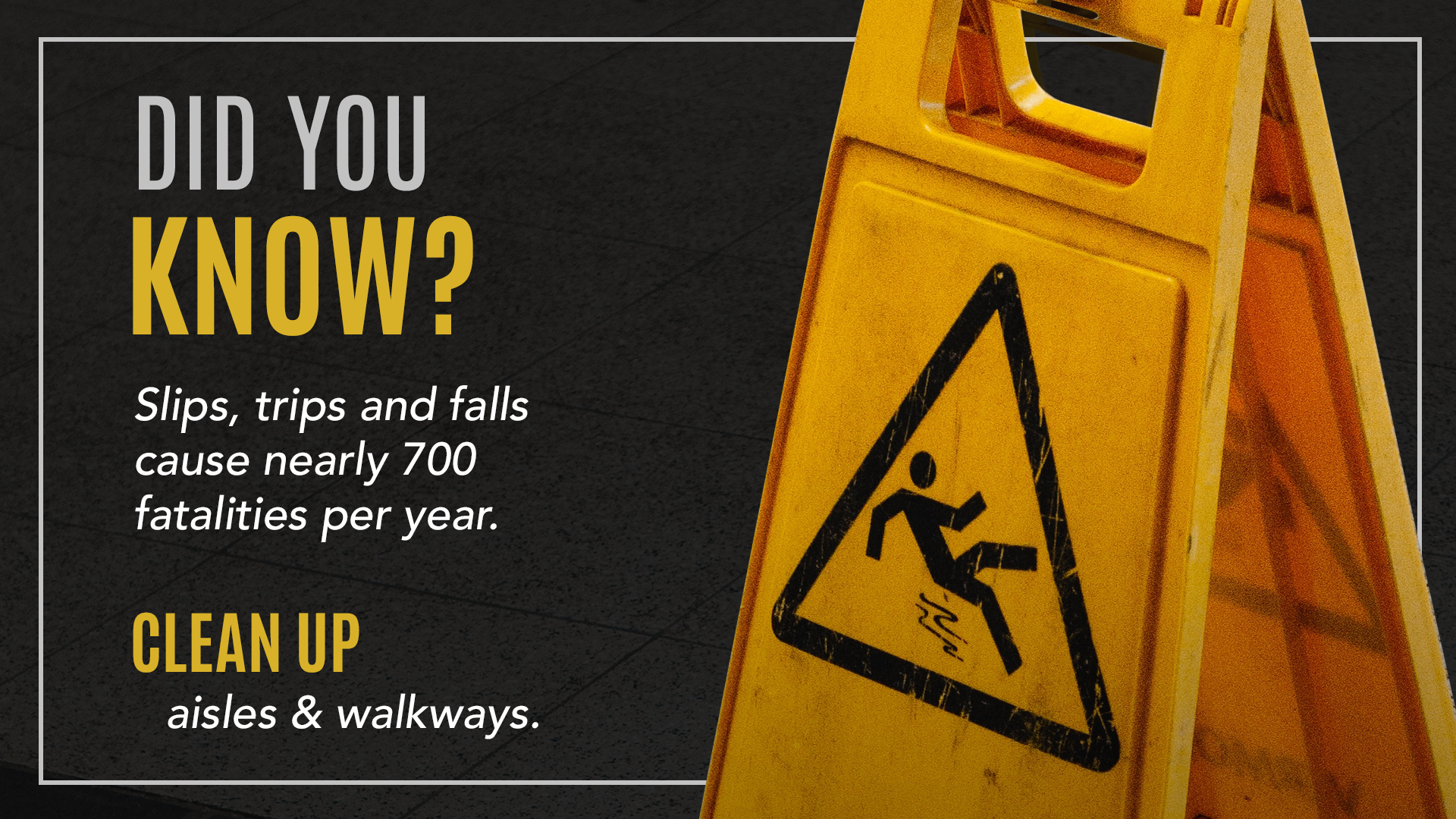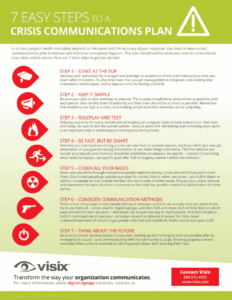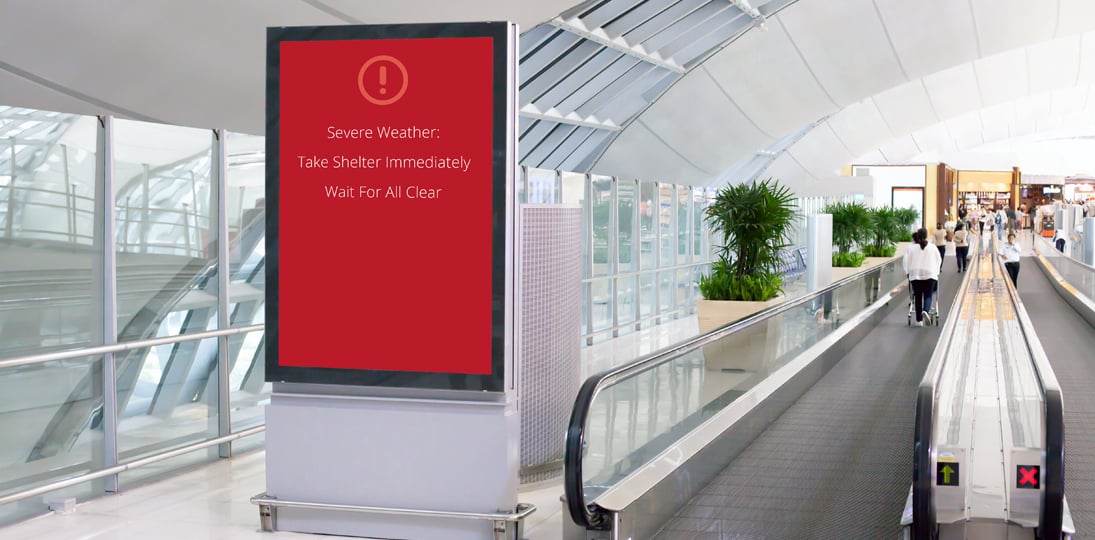In today’s interconnected world, effective communication is paramount, especially during critical events. Emergencies, from natural disasters and public health crises to workplace incidents, can strike without warning. Swift and accurate information dissemination is crucial for the safety and well-being of employees, visitors, and the wider community. Digital signage offers a powerful solution, streamlining crisis communications and enhancing safety by delivering timely alerts and fostering a culture of preparedness.
This guide explores how digital signage empowers organizations to navigate crises effectively and prioritize safety.
Enhance Workplace Safety with Dynamic Digital Signage
Workplace safety is a non-negotiable priority. Digital signage plays a pivotal role in creating a secure work environment by:
- Disseminating Safety Messages: Move beyond static posters. Digital displays can continuously rotate reminders of vital safety protocols, including proper handling of hazardous materials, emergency procedures, lockout/tagout procedures, and the importance of maintaining a clutter-free workspace. Think dynamic visuals showcasing correct lifting techniques or short videos demonstrating the proper use of safety equipment.
- Creating Visual Impact: Capture attention and effectively convey safety messages with dynamic visuals. Short safety videos, compelling graphics, and engaging animations can significantly improve message retention. For instance, a slow-motion replay of a near-miss incident (with appropriate privacy considerations) can powerfully highlight potential hazards and reinforce safe work practices.
- Promoting a Positive Safety Culture: Celebrate safety achievements, such as accident-free days or employee safety suggestions. Publicly acknowledging positive contributions fosters a strong safety culture and encourages active participation in safety initiatives. Imagine a digital “Safety Champion” leaderboard displayed prominently in common areas.
- Providing Data-Driven Insights: Visualize real-time safety performance data, such as accident rates, near misses, and safety audit results. This data visualization helps identify trends, prioritize safety interventions, and demonstrates an organization’s commitment to continuous improvement. Interactive dashboards can allow employees to explore safety data relevant to their department.
- Tailoring Messages for Specific Audiences: One-size-fits-all messaging is ineffective. Customize safety messages based on specific departments, job roles, and work areas. Construction workers might see reminders about fall protection, while laboratory personnel receive messages emphasizing chemical safety protocols.
Grab our free infographic for 10 ways that you can use digital signs in public and staff areas to inform, educate and ease stress for everyone during a health crisis:

Crisis Communication: A Multi-Faceted Approach with Digital Signage
In emergency situations, rapid and accurate communication is paramount. Digital signage acts as a crucial component of a comprehensive crisis communication plan.
- Reaching the Masses Instantly: Strategically placed digital signage allows for the immediate dissemination of urgent alerts, evacuation instructions, and critical information to a wide audience, including employees, visitors, and contractors. Think of it as a broadcast system for critical updates.
- Pre-Programmed Customized Messaging: Develop and pre-program customized messages for various emergency scenarios: fire, severe weather, active shooter situations, bomb threats, chemical spills, medical emergencies, etc. These pre-defined messages should be concise, clear, and easy to follow.
- Ensuring Clear and Concise Messaging: During a crisis, clarity is key. Messages must be concise, easy to understand, and visually impactful. Use simple language, avoid jargon, and incorporate visual aids like icons, symbols, and color-coded alerts to convey critical information quickly. Imagine a red screen with the word “EVACUATE” in large, bold letters.
- Seamless Multi-Channel Integration: Integrate digital signage with other communication channels – email, text messaging, mobile apps, public address systems, and social media – for maximum reach and redundancy. This multi-layered approach ensures information reaches everyone, even if one channel is disrupted.
Leveraging Digital Signage for Health and Safety
During pandemics or outbreaks, digital signage becomes a powerful tool for informing and educating the public.
- Providing Clear Guidance: Display public health guidelines, such as quarantine protocols, testing procedures, and travel advisories, in a clear and accessible format. Use infographics and translations to reach diverse audiences.
- Combating Misinformation: Disseminate accurate and up-to-date information regarding symptoms, transmission, and prevention measures. This helps combat misinformation and promotes informed decision-making. Link to reputable health organizations like the CDC or WHO.
- Reducing Stress and Anxiety: Imagine a fire breaking out in your building. With digital signage, you can instantly broadcast evacuation routes and safety procedures to every screen, ensuring everyone gets the information they need to stay safe.
- Promoting Healthy Habits: Encourage healthy behaviors – handwashing, social distancing, proper mask usage, and vaccination – through engaging visuals and reminders. Humorous animations or interactive games can make health and safety messages more memorable.
SAFETY MESSAGES SUBSCRIPTION
Get a new visual every weekday to keep your staff motivated and healthy. You also have access to over 200 free message designs covering a range of topics from holidays and inspirational quotes to trivia and stress relief tips.

CAP for More Unified Emergency Alerts
Effective emergency communication is paramount, especially in large areas like on a university or corporate campus. OSHA mandates emphasize the need for clear and timely warnings, and the Common Alerting Protocol (CAP) allows for quick updates. With CAP alerts, you can disseminate a consistent warning message simultaneously over many different systems, which both simplifies the process while increasing effectiveness. CAP provides a template for effective warning messages based on best practices, making it a valuable tool for delivering emergency announcements, including alerts to digital signage screens.
However, CAP compliance isn’t a guarantee of seamless integration. When someone states that their product is CAP compliant, it often means they can either produce or receive a CAP message, but not necessarily both. This can lead to significant practical challenges. Many institutions, like college campuses, have multiple proprietary mass notification systems that, despite CAP compliance, may not interoperate. If each system can only produce a CAP message but not receive one, alerts from one system might go unnoticed by others. This fragmentation can severely delay emergency message delivery, potentially leaving certain endpoints and audiences uninformed.
There was a case study about a university that has 27 separate systems, and during testing they discovered it could take as long as 20 minutes to activate them all. This sort of delay is unacceptable in a crisis situation.
To address this, the first step is to categorize your existing emergency systems: those that (1) generate CAP-compliant messages, (2) consume CAP messages, or (3) don’t support CAP. For systems that generate CAP messages, determine how they are disseminated: are they simply posted to a website, or can they be sent to a dedicated “CAP listener” server? If web-based, how are subsequent messages handled? For systems that consume CAP messages, determine if they require direct message delivery or can poll for new messages.
Effectively integrating CAP with digital signage requires understanding these nuances. While CAP offers a standardized format for emergency messages, its practical implementation hinges on ensuring all systems can both generate and consume these messages seamlessly. Only then can you truly leverage CAP to enhance safety and crisis communications through digital signage and other critical notification channels.
Building a Robust Crisis Communication Plan: The Foundation of Effective Response
A well-defined crisis communication plan is essential. Key considerations include:
- Executive Buy-in: Secure executive support and integrate the plan into organizational policies.
- Streamlined Processes: Define clear roles, responsibilities, communication channels, and decision-making processes.
- Thorough Testing and Preparedness: Conduct regular drills and simulations to evaluate the plan’s effectiveness.
- Speed and Accuracy: Prioritize speed and accuracy in disseminating information.
- Target Audience Considerations: Tailor messages to specific audiences.
- Technology Integration: Leverage various communication technologies, including digital signage.
- Post-Crisis Recovery: Include a robust recovery plan addressing post-crisis communication needs.
This handy infographic will walk you through seven easy steps to build your crisis communications plan:

Best Practices for Effective Digital Signage Utilization
- Strategic Placement: Position displays in high-traffic areas – lobbies, reception areas, break rooms, hallways, and near emergency exits.
- Visual Appeal: Use high-quality visuals, engaging animations, and clear, concise messaging.
- Regular Maintenance: Ensure displays are properly maintained and functioning correctly.
- Content Management: Implement a robust content management system for easy broadcasting and updates.
- Accessibility Considerations: Ensure content is accessible to individuals with disabilities.
- Continuous Improvement: Regularly review and refine the digital signage strategy.
Integrating Digital Signage with Existing Systems
For digital signage managers, consider how digital signage integrates with existing building management systems, access control, and other communication platforms. This integration can automate alerts, trigger specific messages based on events, and provide a unified communication platform.
Measuring the ROI of Digital Signage for Safety and Crisis Communication
While the primary goal is safety, measuring the effectiveness of digital signage can demonstrate its value. Track metrics such as:
- Employee engagement with safety messages.
- Reduction in workplace accidents.
- Improved communication during drills and emergencies.
- Faster dissemination of critical information.
Investing in Safety and Resilience
Digital signage has become a critical tool for enhancing safety, improving communication, and building a more resilient organization. By effectively integrating digital signage into safety and crisis communication plans, organizations can better protect their employees, visitors, and the wider community. Proactively addressing safety concerns and communicating effectively during emergencies creates a safer and more secure environment for everyone. Investing in digital signage is an investment in the safety and well-being of your most valuable assets.
